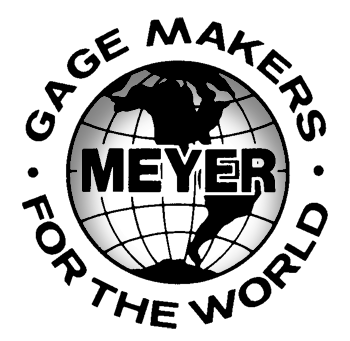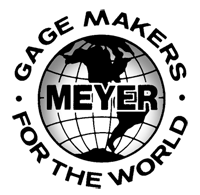Measurement Conflict Resolution
Meyer Gage Company Inc. has adopted the
measurement dispute resolution methods endorsed by the AMTMA.

The obvious way to avoid such problems is to agree beforehand on a method that will be used to resolve them if they arise. Often, the degree of separation between the readings dictates the best approach to take. Where the uncertainty of each party is significantly different, the party with the lowest uncertainty in the calibration would be considered more reliable.
The AMTMA offers the following methods as options you can choose from. If the Referee Method fails to bring a resolution, then the Universal Standard Method should be used due to the fact it is technically based and internationally accepted by metrologists in all disciplines.”
The Referee Method
“The two parties agree on a third party to provide a referee measurement that it is agreed will be considered as the actual value. An alternative on this is where the reading by either party that is closest to that provided by the referee is considered the acceptable value.
Other variations of this method include averaging the readings of three or more laboratories and my also include the readings produced by the parties in dispute.”
Unless otherwise agreed to, the costs of using outside laboratories in this method are paid by the losing party.”
The Universal Standard Method
“National and international standards agencies have produced methods of resolving measurement disputes that focus on the uncertainty budgets of those that have produced the measurements. The advantage of this method is that its technical base tends to remove personalities from the equation and may indicate that neither party to a dispute has the capability required to resolve it.
Using this method, the onus of proving a measurement falls on the party that has questioned the results of calibration. If requested, this party must provide a copy of their uncertainty budget for the measurement to the other party for review. Budgets from both parties should be compared. Such a review should focus on seeking agreement between both parties respecting each element included in the budget since it will rarely, if ever, be all right or all wrong. The mathematics should take care of the rest. There may be cases where one or more elements have not been included in the budget and when they are, the outcome changes significantly.
In the event one or more assumptions in the budget cannot be resolved, a third party can be asked to provide an opinion on them.”
Taken from the AMTMA “White Paper on Resolving Conflict Disputes, for more information on AMTMA, visit www.amtma.com.

